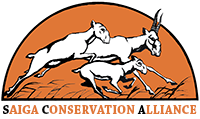Unfortunately, due to heavy rains, the roads to one of the saiga habitats (Sulama and the 40th kilometer), where we observed relatively many fresh animal tracks in May-September 2022 and February 2022, turned out to be impassable. We set up camera traps on Sulama, which we couldn’t reach because of that. We will attempt to access these territories in September 2022.



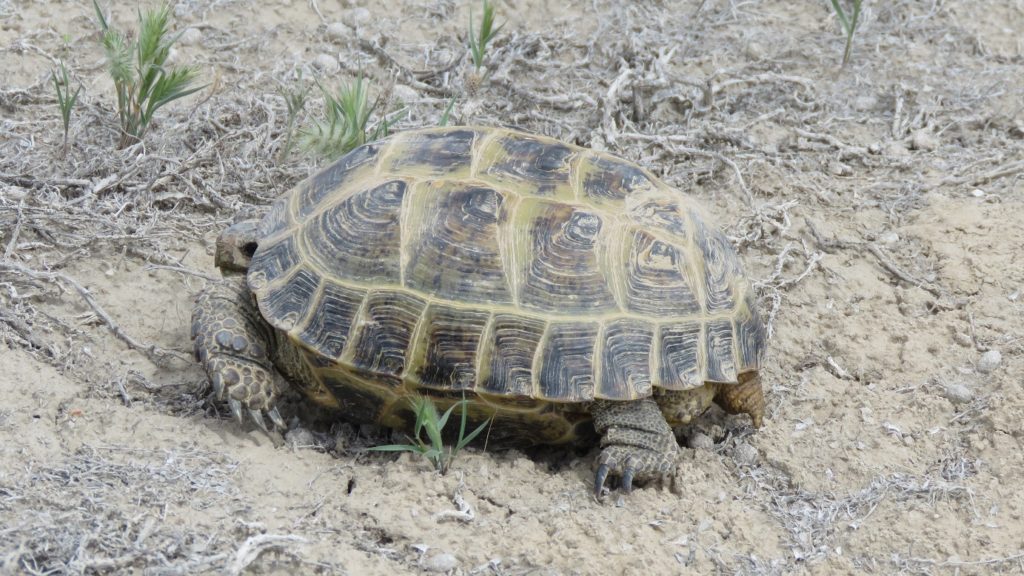
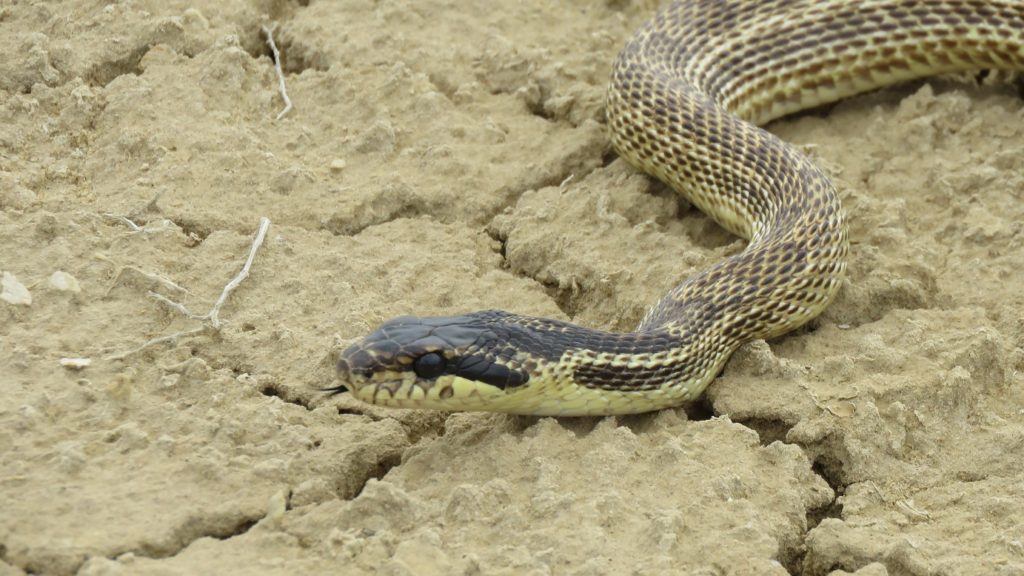
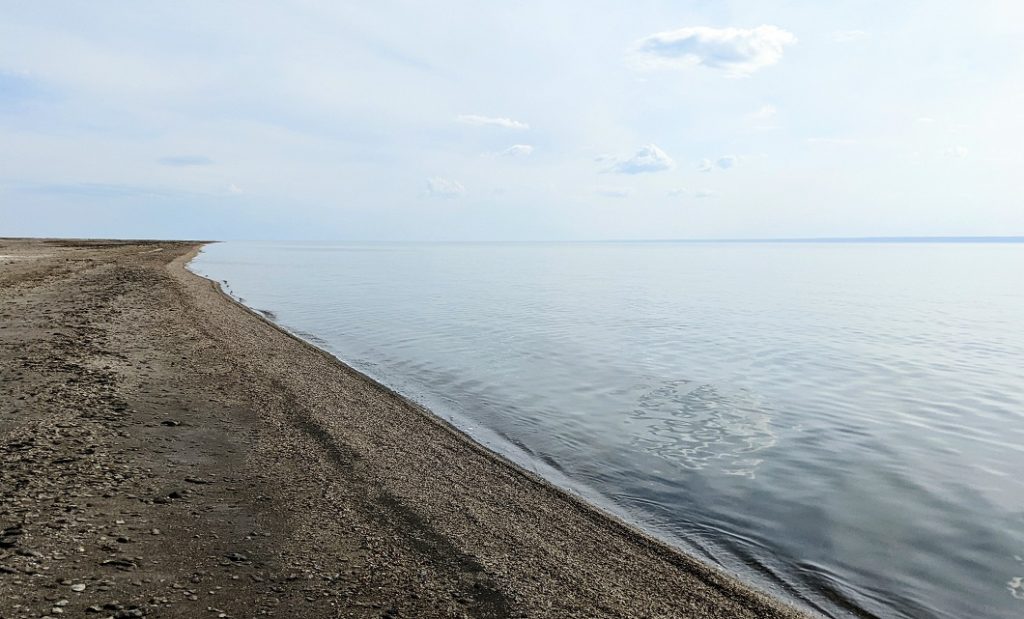
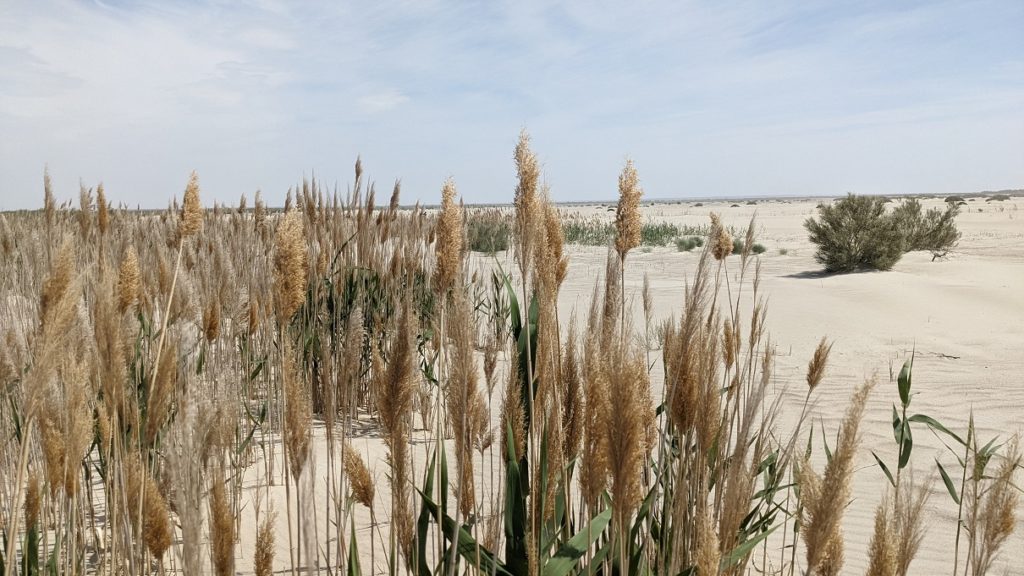
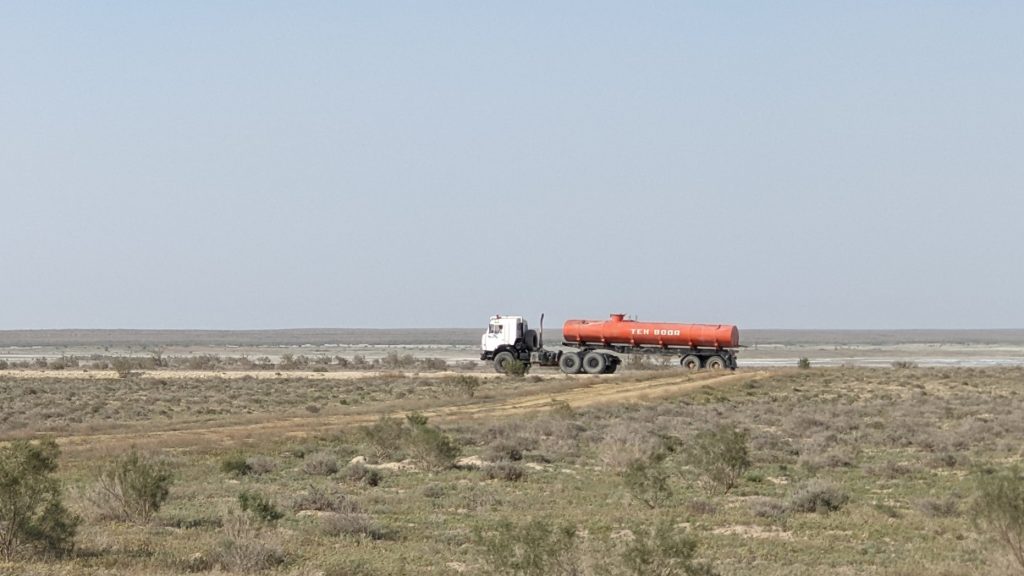
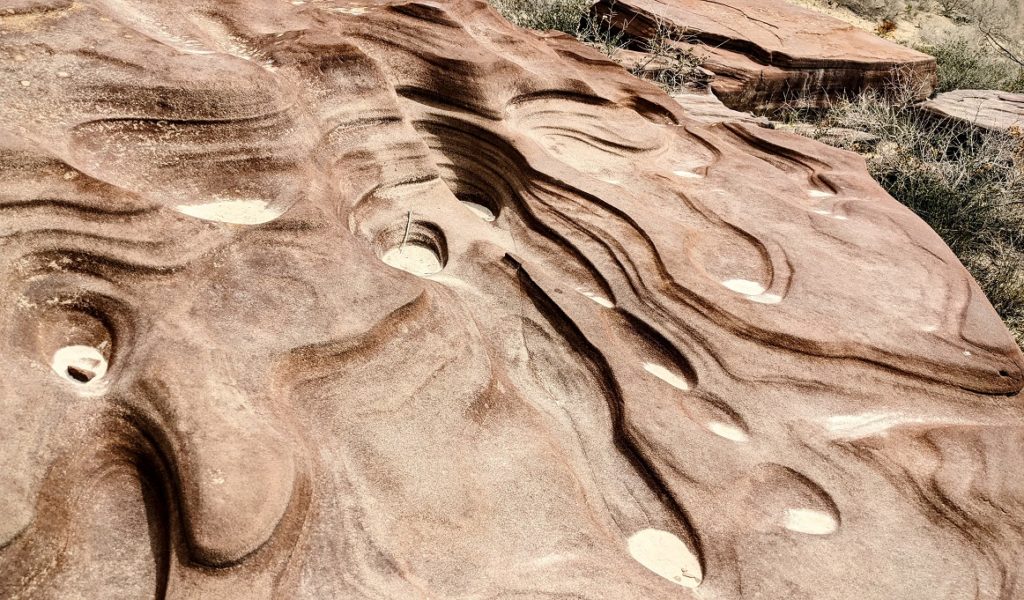
Western Aral. Compared to February-March, when we were there, the situation has changed for the worse for the saigas. At all points where we observed fresh traces of animals, this time around they were no longer there. We noted only one fresh track near the border with Kazakhstan. The reason for this is high disturbance from the oil and gas sector. Eriell Group’s 5 ultra-deep drilling wells (3500-4000 m) have already been put into work there, moreover, the old road is under reconstruction and another new road is being built simultaneously – using local material (such as shell rock and fossil mollusks).
Eriell is an international oilfield services company providing well construction and workover services to leading oil and gas companies in the Russian Federation, Central Asia and the Middle East. Road construction (since February 2021) is handled by another company – Enter Engineering. Both companies work internationally. We interviewed employees of three Eriell drilling rigs (engineers, drillers, drivers), and talked to Enter Engineering drivers. Most of them started working on the territory from February-March 2022. According to them, development drilling is already underway at 4 drilling rigs, one new one is conducting exploration drilling.
Everyone states that the produced gas will be delivered via the Western Aral gas pipeline to Ustyurt, where it is planned to build another processing plant. All this information needs to be clarified and double-checked. Employees of both companies (drivers) gave information that they saw wild boars. They also reported that local residents hunt them and sell them to people on drilling rigs (30,000 uz soums = 3 dollars/kg). We haven’t heard anything about the saiga. In February 2022, we observed fresh tracks of saigas and wild boars in the vicinity of drilling sites, in May there were no tracks. Eriell employees have a rather poor understanding of animals, they do not go beyond the territory of the drilling rigs. The only poster on environmental issues is dedicated to the proper disposal of garbage and waste. The most knowledgeable in terms of the animal world are the drivers of water carriers and tracks that bring soil for road construction. One of them saw 3 saigas in May 2022 (two adult females and one male calf) in the vicinity of Constantine island. Two other drivers saw wild boars: two individuals in self-flowing water wells (the northwestern tip of Resurrection (Vozrozhdeniye) Island) in January 2022 and an adult with two calves about 5 km away from the drilling site in February 2022. We camped on the shore of the Aral Sea, where we observed quite large flocks of flamingos (over 200 individuals).
The border with Kazakhstan. On the way to the north towards the border with Kazakhstan, only one fresh saiga track was found on the drained bottom. A fence made of barbed wire (135m x 600cm) was built on the border – 8 rows plus another fence made of smooth wire in the form of a “tangle”. There are no traces of animals in the surveyed area. The saigas, frightened by the active work of the gas workers, must have remained in Uzbekistan having moved to a more peaceful area.
Constantine Island. Excellent saxaul forest. A little earlier, we found caracal excrements there. In February 2022, two camera traps were installed, which caught foxes and a steppe cat. Caracal has not been recorded. Konstantin Island has been connected to the Resurrection (Vozrozhdeniye) Island by a dense saxaul forest on salty and sandy soils. Here we found many traces and fresh excrement of the Asiatic badger, which is very interesting since this rather large water-loving animal was found in the desert far from water sources. Later, at least two individuals (an adult and a young one), as well as a caracal (!) – a young individual, at least 3 foxes, a steppe cat and a tolai hare, were found on a camera trap installed at a badger burrow on the border of Vozrozhdeniye Island.
Resurrection (Vozrozhdeniye) Island pleased us this time not only with magnificent landscapes, but also with animals that could be observed – Central Asian turtles, rare four-lined snake (RDB Uz), desert sand boa (RDB Uz), tolai hares. A turtledove came to our camp (on foot), the bird was dehydrated and was not able to fly. Another caracal (adult) and common foxes, steppe cats, asian badgers, hares, and steppe turtles got captured by camera traps. Unfortunately, we did not observe the eagle owls that have been nesting on the island’s chink for many years. Apparently, there is some disturbance coming from forestry workers planting saxaul. That forced the birds to leave their usual nesting place. The golden eagles also left their nests on the chink – we found two abandoned nests. Luckily there are still birds on the island, we saw a golden eagle eating a turtle. One of the very interesting findings was a Brandt’s hedgehog, rare for Uzbekistan – we found parts of the skin in the places where the eagle owl perches.
Port. A former port area next to Kandubek/Arask 7 town (that was recently destroyed but not fully cleaned up yet) gained its popularity due to the remains of large old ships. However with the growth of metal utilization demand the ships became especially attractive to locals collecting old metal for sale. They are mostly residents of either Muinak or Kungrad districts. Since last year (2021) we’ve seen a decline of ships and port infrastructure – particularly ships have been cut into pieces with some parts missing. In May 2022 we witnessed that all ships had been taken apart and removed from the port completely. These were the last known ships on the Uzbekistan side of the Aral Sea (apart from the official monument in Muynak town). Multiple attempts have been initiated to request a protection status for the ships as historical artifacts, yet unfortunately these attempts have not been successful. Perhaps in the future (after massive cleaning and restoration) the port area might become a point of interest again. As of now the area is full of industrial waste and is hard to reach. Some water still remains on the port.

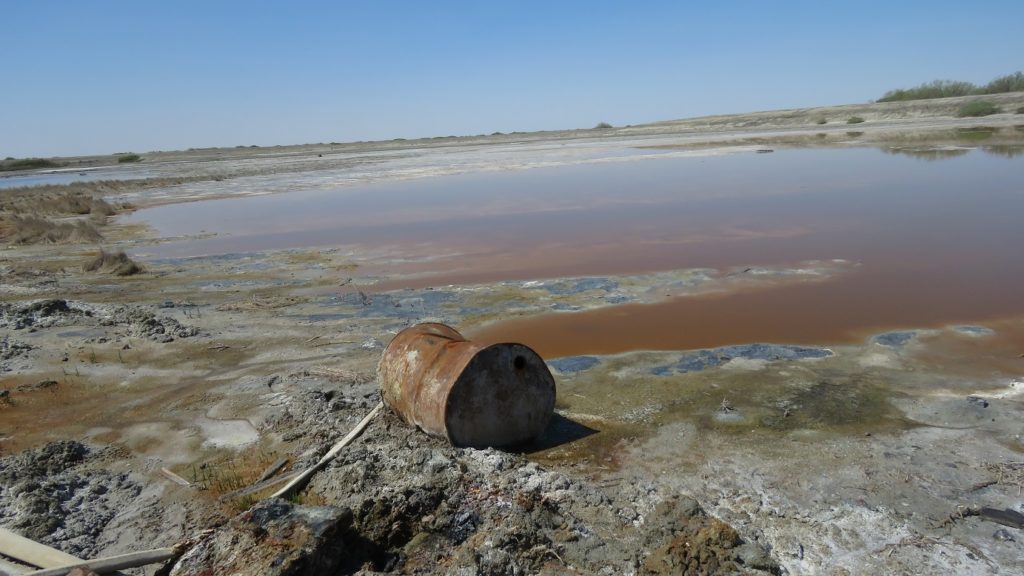
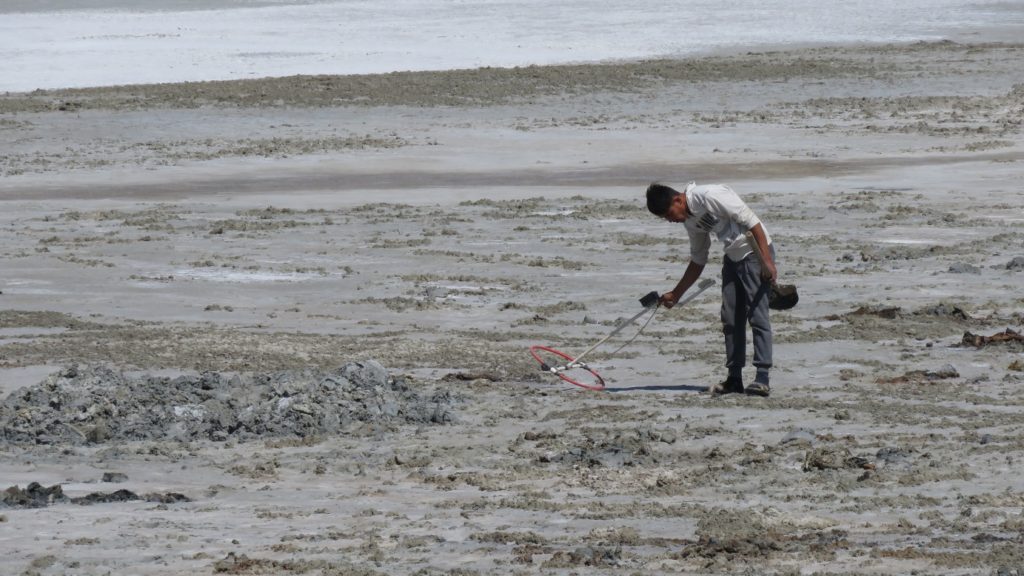
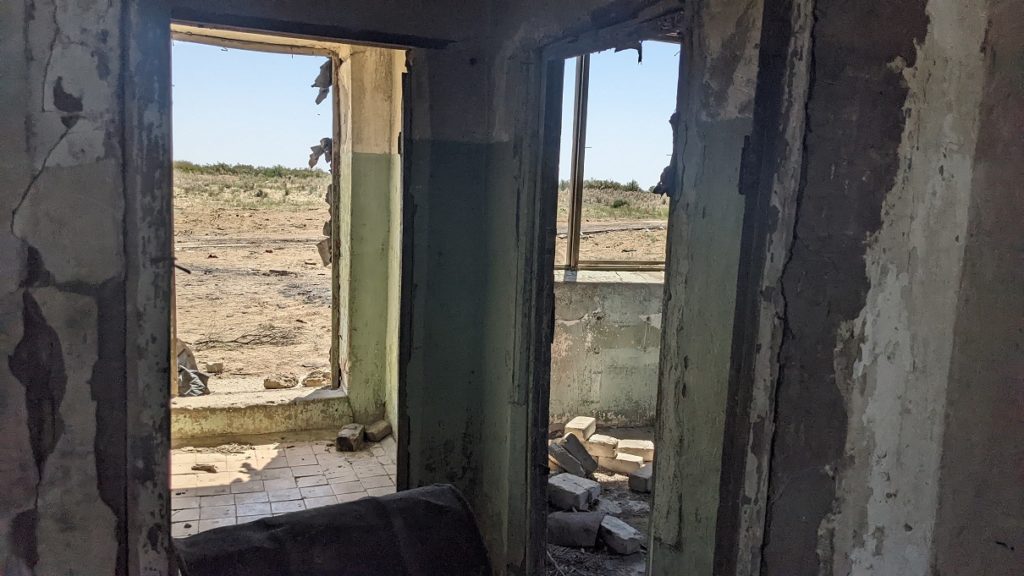
Lazarev Island. Sand dunes and comb “chokolak” of Lazarev Island border on small rocky ledges made of shell slabs, turning into settled areas of the primary island. In Soviet times, a border detachment was located here, then a weather station, then a popular spot for saiga poachers. Now this recent past is reminiscent of inscriptions carved on shell rock, the ruins of a weather station and a pile of bottles and cans of different dates. Lazarev Island is one of the most beautiful places on the former bottom of the Aral Sea, which is home to a number of rare and not very rare animals, and can potentially be used as a very attractive area for sustainable eco-tourism. However, the shell rock is proposed to be sawn into bricks and used for the construction of poultry farms as an environmentally friendly building material. This is indicated in the draft Roadmap for the implementation of the Decree of the President of the Republic of Uzbekistan “On Approval of the National Program for Sustainable Development, Innovation and Widespread Implementation of Green Technologies in the Aral Sea Region for 2022-2026”. Fortunately, the draft roadmap came to us in IoZ, and we did not support this part of the program. However, it is not clear what the final version will be.




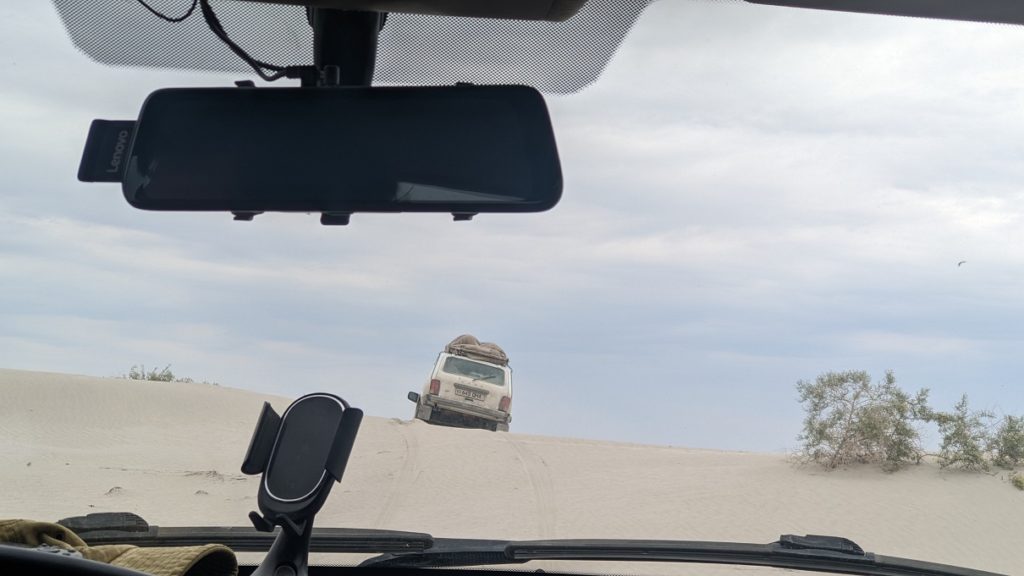
In general, it can be noted that over the years of our observation, starting from 2016, the number of species on the island, even as numerous as the hare, has been declining. All this “movement” around forest plantations, mining of metal and hydrocarbons creates a rather high disturbance, forcing animals to move from their usual places to new ones (saiga, wild boar, eagle owl). The destruction of the infrastructure (the buildings of the former military camp, triangulators) led to a reduction in nesting birds of prey (golden eagle, imperial eagle, common and steppe kestrel) and bats (desert kozhan). There are also cases of poaching (wild boar, hare and presumably saiga).
